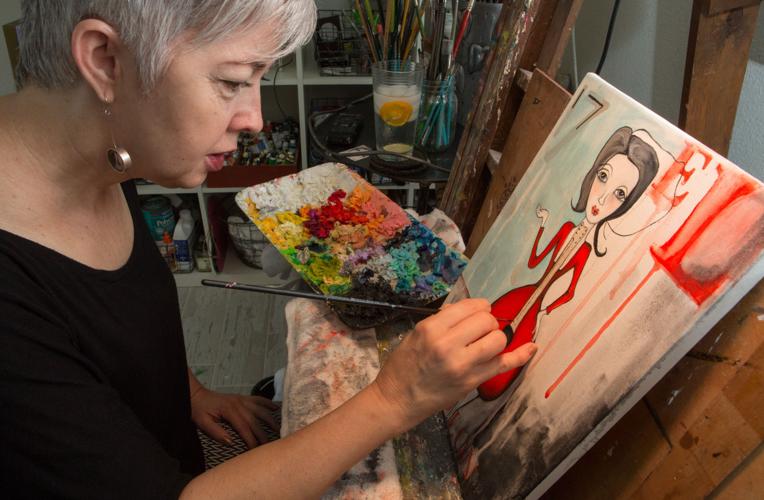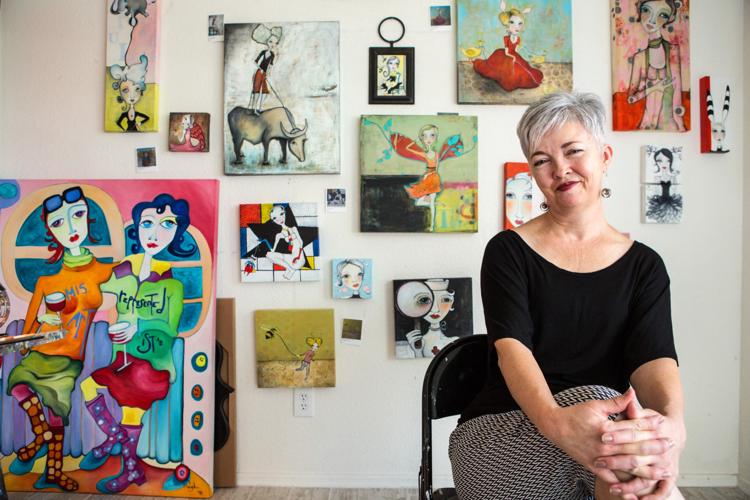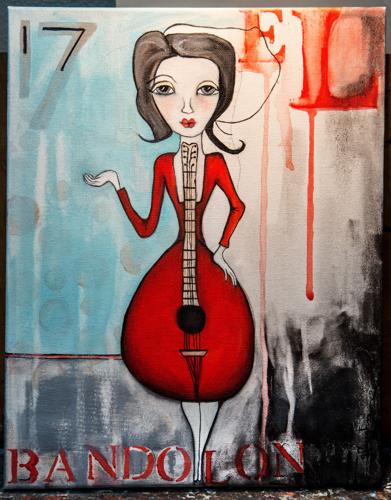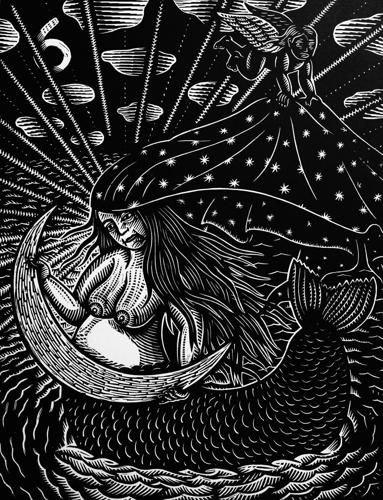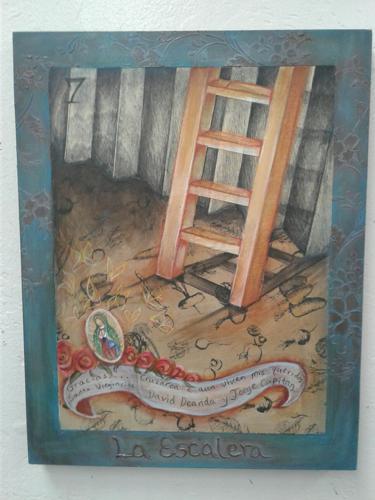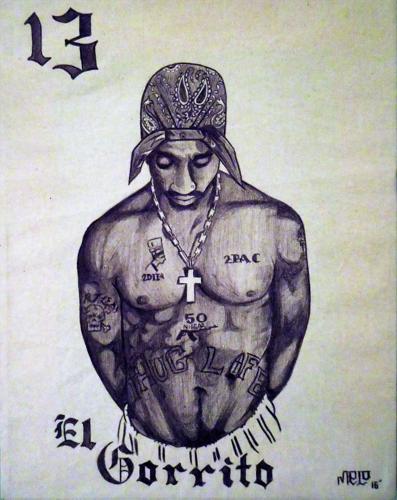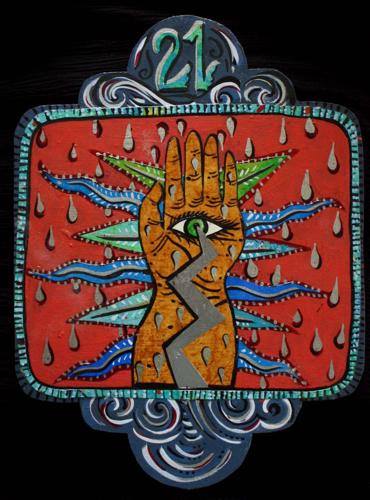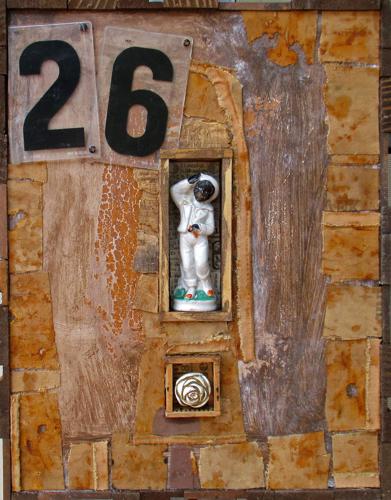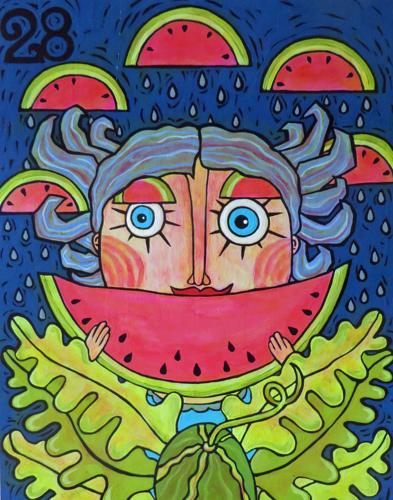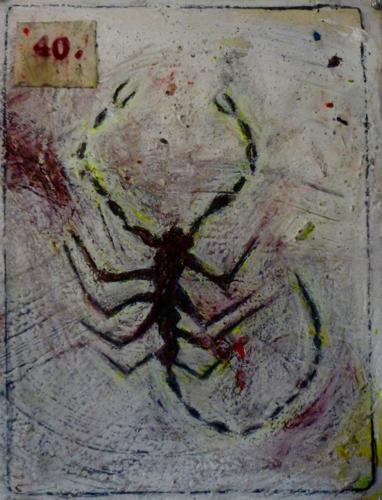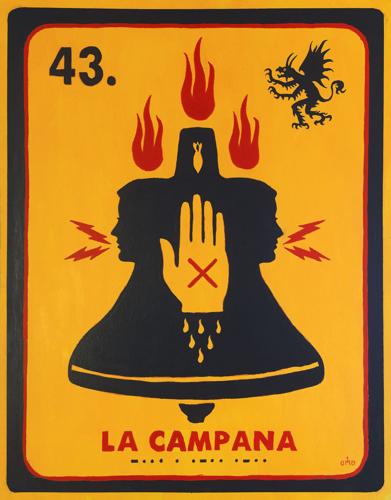Daniel Martin Diaz wanted the devil.
Robin Westenhiser couldn’t believe her luck when she picked the watermelon.
And Ron Kovatch just wanted something out of his comfort zone.
The Tucson artists are among 40 who have contributed pieces to the Galería Senita’s upcoming Lotería! de Tucson exhibit. It will feature 54 11-by-14-inch pieces, each based on a different card in the traditional Mexican game of chance, Lotería.
If you go
What: Lotería de Tucson, an exhibit at Galería Senita at Arte de la Vida.
When: 10 a.m.-5 p.m., Mondays through Saturdays, Oct. 1-Nov. 30.
Where: 37 N. Tucson Blvd.
Opening reception: 6-9 p.m. Saturday, Oct. 1.
The opening reception is Saturday, Oct. 1 but the show runs through Nov. 30
Information: 398-6720 and on Facebook
“I was trying to come up with a show that was different,” says Kevin M. Pawlak, who co-owns the gallery within the Arte de la Vida shop with James Goodreau. “I wanted to do something around Day of the Dead, and that was Mexican themed.”
Lotería cards each have a number, but it is the images that people pay attention to in the game, which is similar to bingo.
Pawlak put the word out through social media and the artist grapevine. While the bulk of the artists signing on are from Arizona, there are three from outside the country participating.
His original thought was to have the artists select which ones they wanted to do. “But then we realized we would be stuck with the same six or seven images,” he says.
So he decided to extend the idea of chance, put a deck of Lotería cards in a hat and drew the card they would interpret.
That’s how Diaz, who is internationally known for his images that are inspired by saints and science, was assigned card 43, the bell.
“I thought, ‘Oh, what can I do,’” recalls Diaz. “I thought I would ask to trade with someone for something interesting, like the devil.”
Instead, he kept the card and allowed it to take him in a new direction: He’s thinking he’ll take on painting a series of Lotería cards.

Tucsonan Liz Vaughn often uses women as subjects in her art work. When she drew No. 17, the mandolin, she knew what to do: “My first reaction was I could make that into a woman.”
Women are often the subject of Liz Vaughn’s art, so when she drew Number 17, the mandolin, she knew just what to do. “My first reaction was I could make that into a woman.”
Some artists grumbled with their assignment, others delighted. But all of them came through with interpretations that will fill the wall of the gallery.
Take a look at some of the works that make up the show’s Lotería deck. All artists are from Tucson unless otherwise noted.
No. 6, la sirena, the mermaid, linocut

Card No. 5, by Alec Dempster — Credit: Courtesy Alec Dempster
Artist: Alec Dempster
From: Toronto
Lotería cards are nothing new to Dempster — he has created two complete sets, with books published on each. One, “Lotería Jarocha,” is based on son jarocho, folk music from Mexico’s Veracruz region. The other, “Lotería Huasteca,” recreates his journey to La Huasteca, Mexico, with cards depicting everything from folk tales to salamanders. Dempster was happy that he got the mermaid. “Some of the other (cards) might not have been as inspiring,” he says. His biggest challenge in creating his piece? “I knew that other artists would be participating, so I wanted to do my best in order to stand out.”
No. 7, la escalera, the ladder, mixed media on panel

La escalera, the ladder, by Carolyn King.
Artist: Carolyn King
“A ladder turned sideways is a bridge,” says King, who lived in Mexico for more than two decades. “It’s personally meaningful to me because I live a life of bridging between the States and Mexico.”
But this image of the ladder propped up against the wall that separates our country from Mexico, and with a small image of Our Lady of Guadalupe, has an even deeper meaning.
“In my piece, I thank the Virgin of Guadalupe for her protection of two beloved men in my life who crossed the border illegally in their younger days,” says King.
No. 13, el gorrito, the bonnet, Bic pen on muslin

Card No. 13, by Melo Dominguez — Credit: Courtesy Melo Dominguez
Artist: Melo Dominguez
Dominguez was flummoxed about how to give a contemporary interpretation to her card. “I was wondering, ‘What the hell am I going to do?’” she recalls. What she did: an iconic image of the late rapper Tupac Shakur, his head wrapped in a bandana and the words “thug life” tattooed across his belly. She’s a painter, but the answer to what to do sent her back to her earlier days of using a pen and doing portraits. And it stretched her imagination. “It’s always nice to critically think about how to interpret something,” she says.
No. 21, la mano, the hand, mixed media

Card No. 21, by Rachel Slick — Credit: Courtesy Rachel Slick
Artist: Rachel Slick
Slick’s art traditionally includes the creation of milagros in which hands are central, so this challenge resonated with her. “For me, the hand is such a symbol of ability and strength; I usually represent them that way,” she said. While researching her card, she discovered that the hand is generally a thief’s hand. “That went into my process in creating the piece,” she says. “It somewhat changed the way I was approaching it.” And that eye? “It’s about the all-seeing of the thief, and being a spy.”
No. 26, el negrito, the little black one, mixed media assemblage

Card 25, by Kyle Johnston — Credit: Courtesy Kyle Johnston
Artist: Kyle Johnston
Johnston knew nothing about the game, so he did some extensive research when he drew this card. “When I started to put the piece together, I was cautious about not being offensive,” he says. “I think the card is kind of anachronistic.” The original card has a dapper black man with a hat, a cane and a rose in his lapel. It has sometimes been called the Sammy Davis Jr. card. Johnston took the “little” literally and found a small black figure slipped into a sort of shadow box. A metal rose is a nod to the one worn by the figure in the original.
No. 28, la sandía, the watermelon, acrylic on birch board

Card 28, by Robin West — Credit: Courtesy Robin West
Artist: Robin Westenhiser
This card was perfect for her, says Westenhiser. “It was a shock when I got it, but I was pretty happy because I very often include watermelons in my paintings.” Westenhiser’s paintings are whimsical and bright. But she also paints in a much bigger size, so she was forced to compact her usual images. “I had fun with this,” she says. “I knew I wanted to make a girl that loves watermelon, a goofy girl with watermelon.”
No. 40, el alacrán, the scorpion, mixed media

Card No. 40, by Ron Kovatch — Credit: Courtesy Ron Kovatch
Artist: Ron Kovatch
Kovatch was intrigued with the idea of creating a piece based on a card. “I liked the challenge of taking on something I have little control over,” he says, explaining that what he paints is dictated by his imagination, not an image on a card. He describes his abstract works as “slash and burn,” so creating the scorpion took him out of his comfort zone. Since Kovatch’s recent work has leaned toward the abstract, he infused that aesthetic into the card. “That work was about the physical process of scribbling with great urgency and pressure, free of any burden of narrative,” Kovatch said in an email about creating the scorpion. “... I applied this physical process, basically mimicking the Lotería card of the scorpion. El alacran is an image loaded with symbolism, feared by most, a strange and eccentric, enigmatic and wonderful exoskeleton. I simply reinterpreted the Lotería card in my raw and rugged style which pays homage to Abstract Expressionism.”
No. 43, la campana, the bell, oil and gouache on wood

Daniel Martin Diaz, Card No. 43, — Credit: Courtesy Daniel Martin Diaz
Artist: Daniel Martin Diaz
As he struggled to think of how to interpret the card artistically, Diaz remembered sitting in a little village in the Alps listening to the church bells ring in his village, then the next and the next. He was once told that church bells are rung to destroy evil spirits. “Everywhere the bells resonate, they are shattering evil,” says Diaz. “That idea spoke to me.” He had been studying Russian propaganda posters when he was asked to do the card, and he decided to use that aesthetic in creating it. “I was conflicted, but once I finished it I was really happy with it. … It made me do something I never would have done; now I’m anxious to start on a whole deck.”


